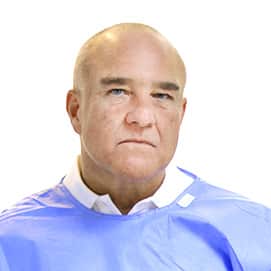Diverticulosis, diverticula of the colon are blindly ending sac-like protrusions of the colon.
Causes
Muscular defects of the intestinal wall lead with age to the formation of sac-like protrusions consisting of the intestinal mucosa, called diverticula. Contributing factors to this are increased pressure in the colon, as well as hereditary metabolic disorders.
The sigmoid colon, the S-shaped segment of the intestine located in the left lower abdomen, is most commonly affected. The causes of diverticulosis are:
- unbalanced diet (lack of coarse fiber and vegetable fibers in food, a large amount of fat),
- lack of physical activity
- overweight,
- constipation.
In industrialized countries, diverticulosis is the most common disease of the colon, the frequency of which increases with age (among 60 year olds: 40% in this age group have diverticula).
Risk: perforation, complications such as the formation of abscesses, bleeding, inflammation (diverticulitis), perforation of the intestinal wall with the release of the contents of the intestine into the free abdominal cavity, fistulas, intestinal obstruction, edema of diverticula.
Prevention
The use of food rich in coarse fiber and vegetable fibers, a large amount of liquid. In the presence of asymptomatic diverticula: a “healthy” diet, i.e. fiber-rich food, plenty of fluids, possible use of laxatives, weight loss. In general, avoidance of the above possible causes of the disease.
Symptoms
In most cases (80%), patients do not complain.
typical pains: discomfort with pressure in the left lower abdomen, increased body temperature.
Diagnostics
- Thorough examination and questioning of the patient.
- Laboratory blood test,
- ultrasound examination of the abdominal cavity (sonography),
- colonoscopy (endoscopic examination of the large intestine),
- in certain cases, X-ray examination, computed tomography of the abdominal cavity, enema with a contrast agent.
Treatment
- For diverticulosis: fiber-rich foods, plenty of fluids, changes in eating habits.
- For constipation: a laxative, such as milk sugar (lactulose).
- For diverticulitis (acute inflammation): food without fiber, antibiotics, anti-inflammatory drugs (5-aminosalicylic acid) or infusion therapy (dropper).
- In more severe cases, “turning off the intestines”, complete refusal of food, the use of antispasmodics and painkillers, if necessary, surgical treatment.
Surgical treatment: in the event of complications, an urgent operation with a high degree of risk. Ideally: coordination of actions of therapists and surgeons and as a result:
- early surgery in younger patients (under 50 years of age);
- in other cases, planned surgical removal of the intestinal area affected by diverticula after the second attack of the disease (diverticulitis).
In the case of elective, if possible, minimally invasive operations (surgery with a minimum degree of penetration into the human body / with minimal invasion):
The concept of rapid treatment: special forms of anesthesia in combination with early mobilization of the patient after surgery lead to a reduction in complications, a better course of the disease.
Head of the Clinic for Gastroenterology and Hepatology, University Hospital Essen
Video
Request appointment
Useful links
Photo gallery










